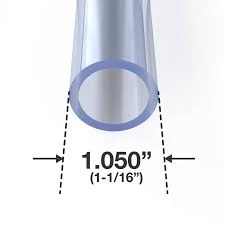නොවැ. . 14, 2024 22:29 Back to list
hdpe duct pipe
Understanding HDPE Duct Pipes Advantages and Applications
High-Density Polyethylene (HDPE) duct pipes have gained significant attention in various industries due to their exceptional properties and versatility. HDPE is a type of thermoplastic made from petroleum, characterized by its high strength-to-density ratio, making it an ideal choice for a variety of applications, particularly in the construction and utility sectors.
Understanding HDPE Duct Pipes Advantages and Applications
In addition to their chemical resistance, HDPE duct pipes are also known for their flexibility and ease of installation. These pipes can be manufactured in various diameters and lengths, which allows for customized solutions tailored to specific project needs. Their light weight makes transportation and installation simpler and more cost-effective compared to heavier materials. Furthermore, HDPE duct pipes can be installed using various methods, including trenching and directional drilling, which minimizes disruption to the surrounding environment.
hdpe duct pipe

Another notable feature of HDPE duct pipes is their ability to withstand extreme temperature variations. They can function effectively in a wide range of temperatures, from -40°C to 80°C (-40°F to 180°F), making them suitable for both hot and cold climates. This thermal stability is vital for applications where temperature fluctuations are common, such as in geothermal installations or underground utilities.
In terms of sustainability, HDPE duct pipes are an environmentally friendly option. They are manufactured from recyclable materials, and the production process itself generates fewer pollutants compared to other conventional piping materials. Furthermore, HDPE pipes are not only reusable but also contribute to reducing the carbon footprint of construction projects by fewer transportation requirements due to their lighter weight and longer lifespan.
With the growing demand for reliable and efficient infrastructure, the applications of HDPE duct pipes continue to expand. They are widely used in the telecommunications industry for fiber optic and telecommunications cable installations, providing a protective conduit that safeguards the sensitive cabling from environmental damage. In the water and wastewater industries, HDPE pipes are favored for their leak-proof joints and overall durability, ensuring a steady and safe supply of water.
In conclusion, HDPE duct pipes offer numerous benefits such as chemical resistance, flexibility, thermal stability, and sustainability. Their wide-ranging applications make them a preferred choice in various industries. As more businesses and municipalities recognize the advantages of HDPE duct pipes, their usage will likely continue to grow, propelling innovations in infrastructure development and contributing to a more sustainable future. Understanding these advantages is essential for professionals in construction and utility management, as it informs better decision-making regarding material selection and the implementation of efficient systems.
-
PVC Transparent Sheet Roll - Durable & Flexible PVC Plastic Sheet Roll for Industrial & Home Use
NewsJun.24,2025
-
High-Quality PVC PPR Pipes and Fittings Durable ERA PPR Solutions
NewsJun.10,2025
-
High-Quality Large HDPE Sheets & Large Diameter PVC Pipe Durable Large PVC Pipe Supplier
NewsJun.10,2025
-
High Density Polyethylene Cutting Board - Durable & Food Safe
NewsJun.09,2025
-
3 Inch PVC Pipe for Durable Irrigation Affordable & Reliable
NewsJun.09,2025
-
Premium PPR Plastic Water Pipe Fittings - Durable & Leak-Free
NewsJun.09,2025

